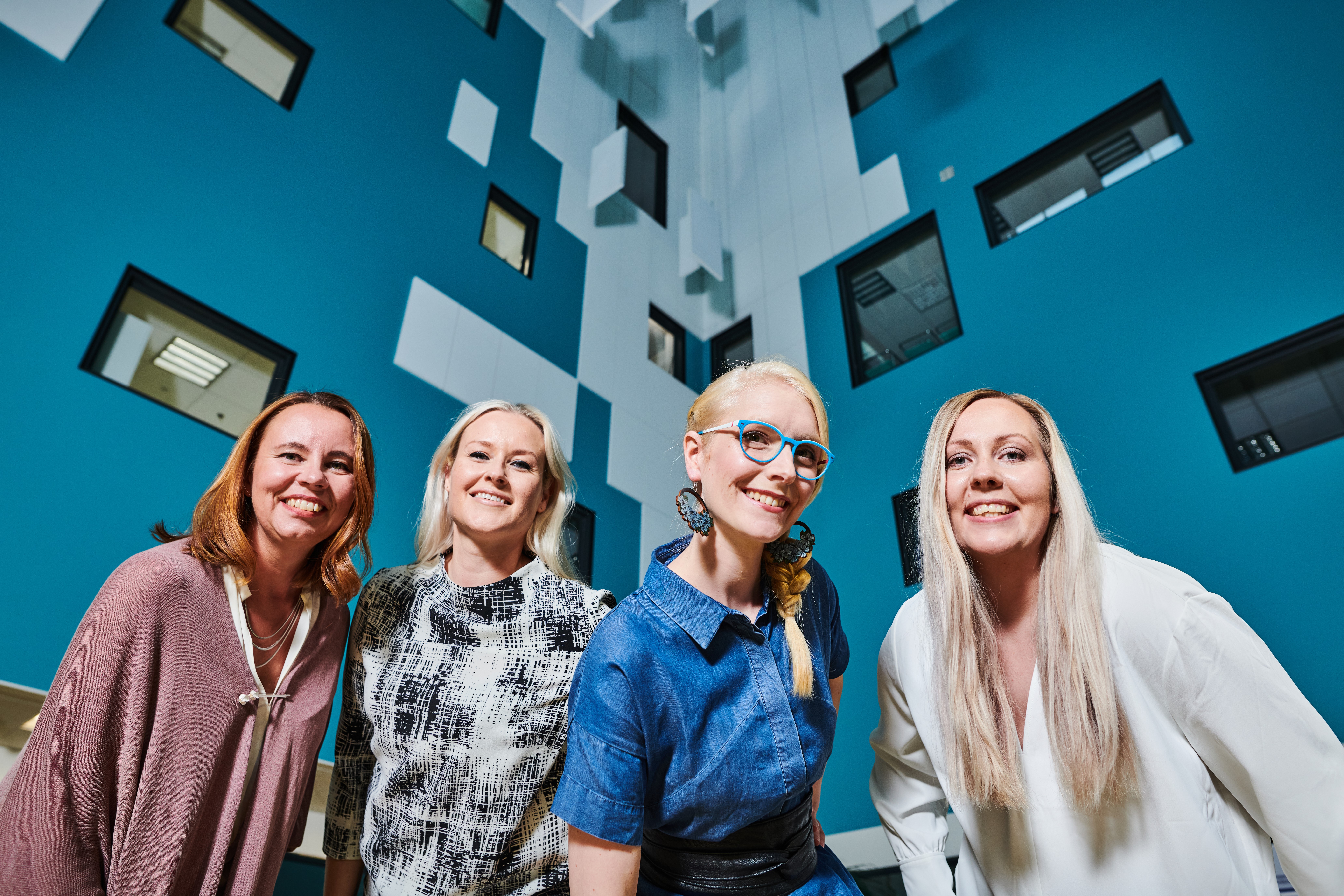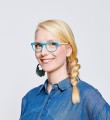Hi Laura,
You are CEO of the Finnish start-up StemSight. You have been recognized by Junior Chamber International (JCI) as one of the 10 outstanding young persons worldwide and together with your great team you have received an incredible amount of grants and awards. How long have you been around and what is your mission?
Thank you for that introduction! StemSight’s mission is to take cutting-edge science from the lab to benefit patients suffering from corneal blindness. Our core technology to differentiate specific corneal cells, called limbal stem cells, from pluripotent stem cells, was originally developed in Prof. Heli Skottman’s research group in Tampere University. The first innovation in this field was done already in 2014, and a lot of work has done to further improve the technology. We spun out the company from the university in the spring of 2021.
If you remember back to your beginnings - how did it all start and how did you come up with the idea of founding a start-up?
Originally, we thought that we would develop our technology up to a certain point, and then some big pharma company would take it out of our hands and commercialize it. Pretty soon we realized that the world doesn’t work like that. New innovative drugs take a lot of time and money to develop, and academic funding is not very well suited to advance these kinds of projects. So, we decided that if we want patients to benefit from our technology someday, we had to take it further ourselves. We trusted our science and our cells – and still do!
What were the most difficult obstacles at the beginning or during the foundation and who or what helped you?
There aren’t a lot of similar cases to compare ourselves against, or even many people who would have previous experience in developing iPS cell-based therapies. That of course makes it all the more interesting for us, but it also presents some obstacles in finding knowledgeable investors, partners and mentors. There is a lot of good mentoring networks that we have been a part of, for example SPARK Finland and NOME (Nordic mentor network for entrepreneurship), which have helped in the initial stages of setting up a company and formulating the business case.
You yourself specialize in stem cell research and bioengineering. What was it like for you when you suddenly had to take care of funding, billing, certifications, marketing, etc. in parallel with your research?
Well, the change was in fact not that dramatic, except that I don’t do any hands-on lab work anymore. Already in my academic career I had to apply for funding for my own research. Now the difference is that you just get more frequent chances and more feedback on your funding proposals from investors than with academic funding. Of course, now I am responsible for not just my own salary, but my employees as well. We are not actually selling or marketing any products, since they are still in development, but I have had to learn some marketing and pitching of our company and business ideas to get interest from potential investors and partners.
In Europe, we see a much less popular startup culture compared to the US. What do you think is the reason for this and what could be done to improve this and support young founders in Europe, especially in medicine?
The startup culture in Europe is naturally younger than in US. But I think Europe is catching up, and actually many US investors are already getting excited about European startups. Because there has been less money available in Europe, our startups are generally more stringent with their cash, they raise smaller funding rounds, and the valuations are lower. In this current economic uncertainty, that is very appealing to US investors. In my opinion, we could still learn a lot from the US startups in terms of thinking bigger and creating a clearer story around our cool technologies, which we have so much of – especially in the field of medicine and life sciences!
What did you underestimate when building your startup? What mistakes did you make that you would not do again?
I was overly optimistic about the time it takes to raise funding and to get to certain milestones. I have learnt that we should always plan and conduct a small pilot study first to work out any technical challenges before going full-steam ahead. I have also learned always to question and verify every assumption we make, because working on false assumptions can cost a lot of time, money, and energy.
On your way you basically went from a Finnish, national start-up to an internationally known and internationally operating start-up. The term ecosystem often comes up in connection with startups. What do you think a European ecosystem should look like and what do you think are the clear differences between the European and the American startup ecosystem?
I’ve recently had the opportunity to see some of the wider European startup ecosystem through my participation in the EU Female Founders initiative. Europe is very diverse, there is a wealth of different cultures within Europe, which is a great asset in itself. However, Europe is very fragmented in terms of markets, and there is no single European market as there is in the US. Instead, each individual country represents an isolated market, making it much more difficult to penetrate. That is why European startups have to think internationally from the very beginning.
Initially, your team consisted only of women. In a research project that we worked on together, I experienced your team as extremely well organized and very stringent and determined in their work. Do you think this is gender-specific?
Ha-ha! No, I think those are most likely just Finnish traits! Of course, the work in Prof. Skottman’s group has always been very focused on the translational aspects of the technologies. The research is always done with a clear vision that someday we could benefit patients and society with the results. However, it seems to me that women are generally more drawn to these kinds of impact-driven projects.
In Germany, it is always a challenge - and this now applies not only to women who have children, but also to men who want to take parental leave - to define a compromise between one's role as a parent and one's role as a founder/researcher/doctor and to do justice to both. I find it particularly fascinating that many of you have children, working partners and everything still works so well. Why is that and what can the world learn from Finland in this respect?
Absolutely, we all should balance working life and family life. I was on maternity leave myself when we founded the company. My son is two months older than StemSight. The reason this was possible for me was the great flexibility of the Finnish parental leave system, which allowed both me and my spouse to take 50% parental leave – since both of us had a company to run. And we had very supportive grandparents as well. In my opinion, the best way to promote equality in the workforce is to support equality in parental duties. Finland has taken steps to promote this equality in parental leave even more, but unfortunately there still seems to be some stigma against fathers staying at home. Fathers also have a right to enjoy time with their kids, and I think this should be more widely encouraged by employers.
Is your goal to continue the start-up as it is, or do you sell in five years and then live on a warm island? :)
Sailing the world around some tropical islands is indeed a dream of mine… But I don’t think I could do it forever. I think that eventually I would apply the learnings from StemSight’s journey to some new exciting innovation.
What are your next goals and where do you see yourselves in 10 years?
Given the long timelines and big plans we have for StemSight, I hope that in 10 years you and other corneal surgeons can use our product to restore the vision of limbal stem cell deficiency patients, and our corneal endothelium replacement is showing some good results as well. Most likely, though, I would be replaced by a more commercially experienced CEO by then. So, perhaps I’ll be sailing around the world in 10 years…
Links:




